One of the delights of travelling in tropical countries is the sheer abundance, variety and quality of tropical fruits!
Some staple fruits taste decidedly better in Asia or Latin America than they do elsewhere. Mangos, when in season, are phenomenal wherever they are grown. Pineapple in countries like, say, Thailand or Colombia tastes a world apart from what passes as pineapple in Europe. On the other hand, bananas oddly taste about the same everywhere in the world (as far as my taste buds can tell me).
But there is much more to try than just the usual pineapples and bananas!
Next time you go on a fruit market on your trip or get a fruit shake made, consider trying some of the following exotic fruits.
Or prepare for your trip to Latin America by familiarizing yourself with these fruits before your departure…
Mangosteen
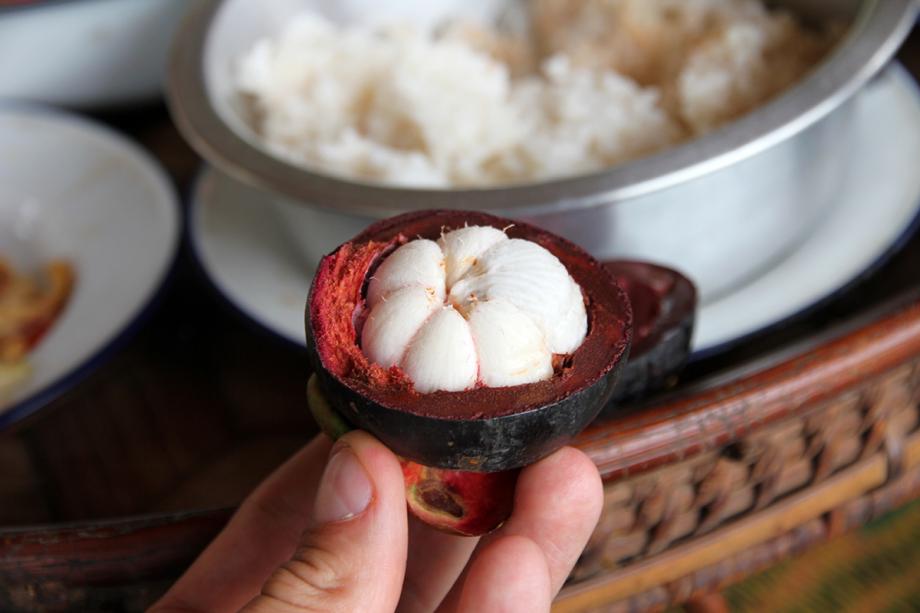
Having mangosteen for desert in Laos
These have nothing to do with mangos! Mangosteens grow mainly in Southeast Asia, but also in tropical South American countries such as Colombia and Puerto Rico. The key to eating this is to cut it at the top, and inside you will find a sweet white flesh resembling garlic cloves. Scoop the cloves out with a spoon. To my mind it tastes a bit like pear, but with a stronger consistency.
Mangosteens are rarely sold fresh in Western countries so take your chance when you see them.
Lychee
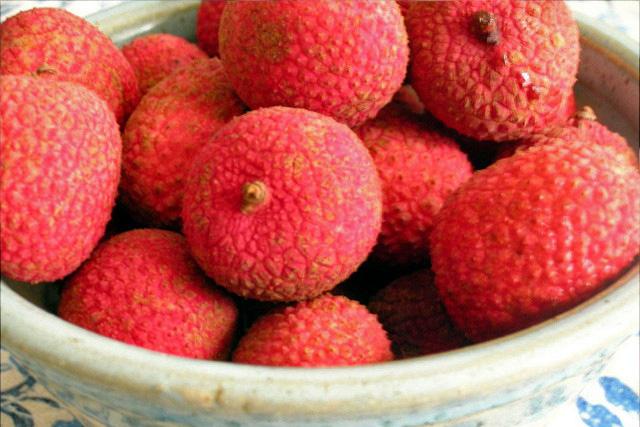
This fruit originated in China but is today grown in many places around the world. They’re grown in Thailand and Brazil, among other places.
You can get them in Europe but they’re not very common, and usually they’re canned and preserved in sugar syrup (gross!). One time in a fancy bar in London me and my friends ordered 4 lychee martinis, only to be told that “regrettably, we only have one lychee left”. This would never be a problem in Thailand, where the waiter could probably just cross the street and buy some more.
Lychees have a sweet delicate taste, kind of between a pear and a grape.
Dragon Fruit
Where: Southeast Asia (mainly Pink) & Latin America (mainly Yellow)
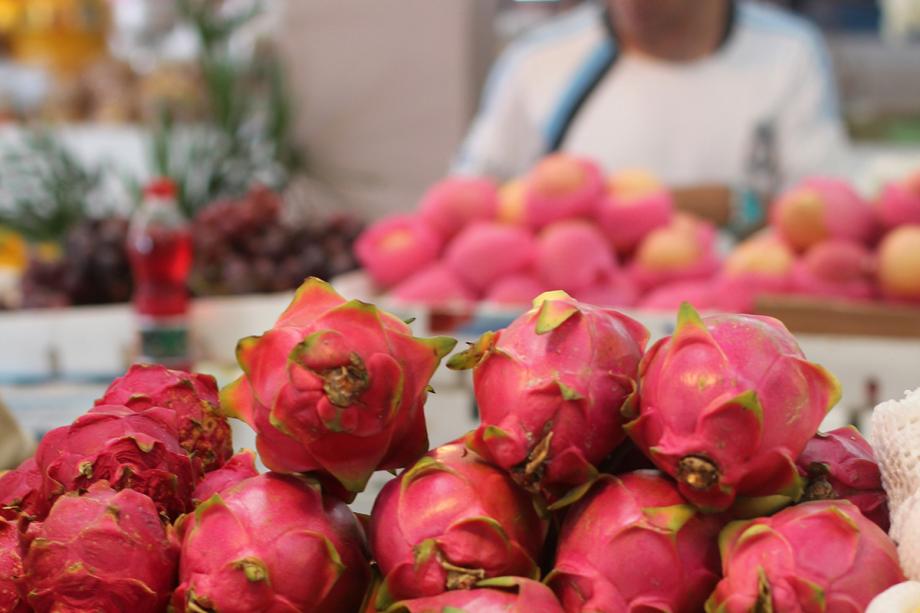
Dragon Fruit (or Pitaya) is common throughout Southeast Asia as well as East Asia (e.g. China and Taiwan). I like them a lot though they can be an acquired taste; I know some people find them a little on the bland side, kind of like watermelon.
Pink Dragon Fruit is most common in Asia, whereas you may also find a much sweeter yellow version in Latin America. The Yellow Dragon Fruit is by far by favorite fruit in Latin America. It’s awesome! The first time I tried it, my face apparently looked like I was having an orgasm. So yeah, try the yellow Dragon Fruit.
Fun facts: Dragon Fruit actually originates in Mexico. Also, it grows on cacti!
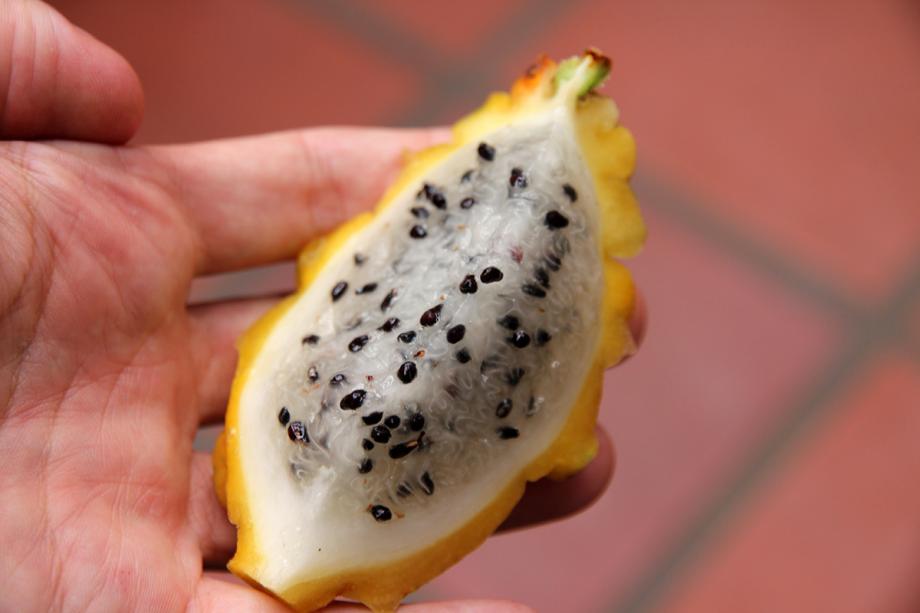
The yellow Dragon Fruit is much sweeter than the Pink version.
Guanabana (Soursop)
Where: mainly Central America and northern South America (not as common in Southeast Asia)
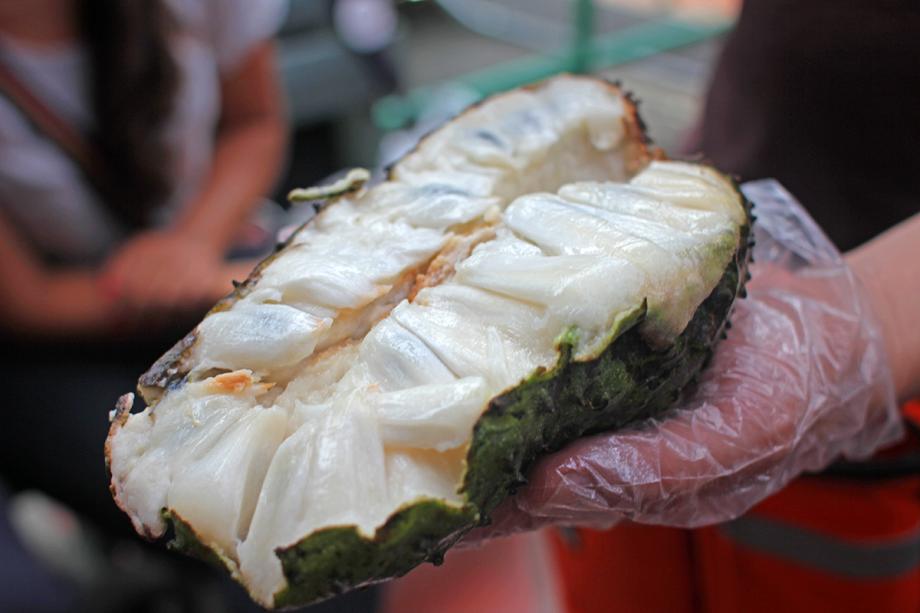
Okay, so this ancient Incan fruit is fucked up. Eat these mainly for the experience—if you don’t mind getting your hands dirty!
Guanabanas are a bit difficult to handle so getting the fruit out will be messy. Their appearance and texture are weird, and it’s kind of got the consistency and chewiness of white fish. To me it seems kind of like a sea creature that got trapped inside a fruit shell by an evil wizard. It’s worth having a try picking this thing apart.
The English name Soursop is a bit of a red herring. It actually tastes a bit like pineapple or banana, and isn’t sour.
Sweet Granadilla (Passion Fruit)
Where: Latin America, South Africa
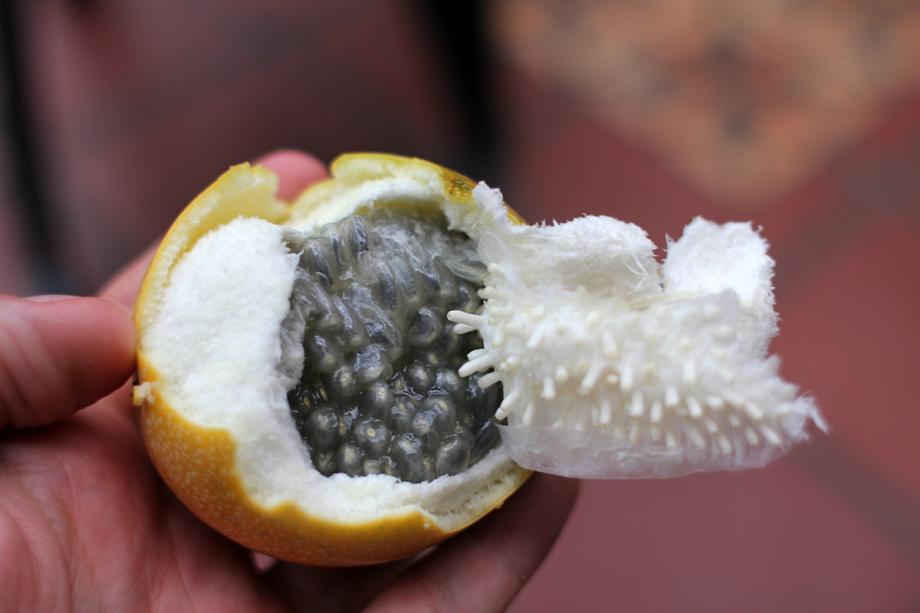
Look at those crazy little tentacles on that shell!
There are many types of passion fruit, but the Sweet Granadilla is one of the more interesting ones. It’s got a white fluffy outer layer that feels a bit like felt. Inside are juicy seeds which you can suck out of the shell without your lips even touching the fruit. The taste is quite sour but very refreshing.
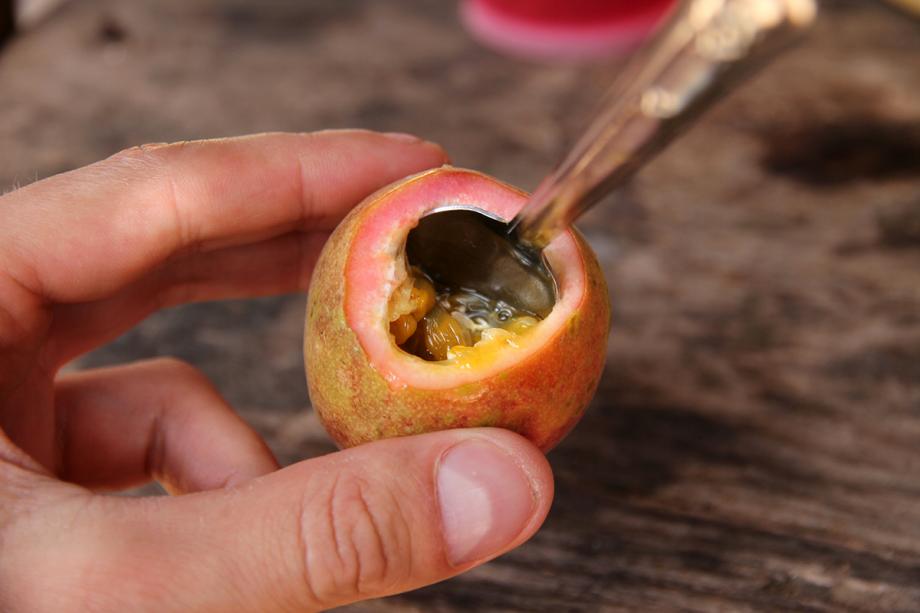
Passionfruit comes in a whole bunch of different shapes and sizes. Here’s a tiny one I had in Thailand.
Cape Gooseberry
Where: Latin America, India, South Africa
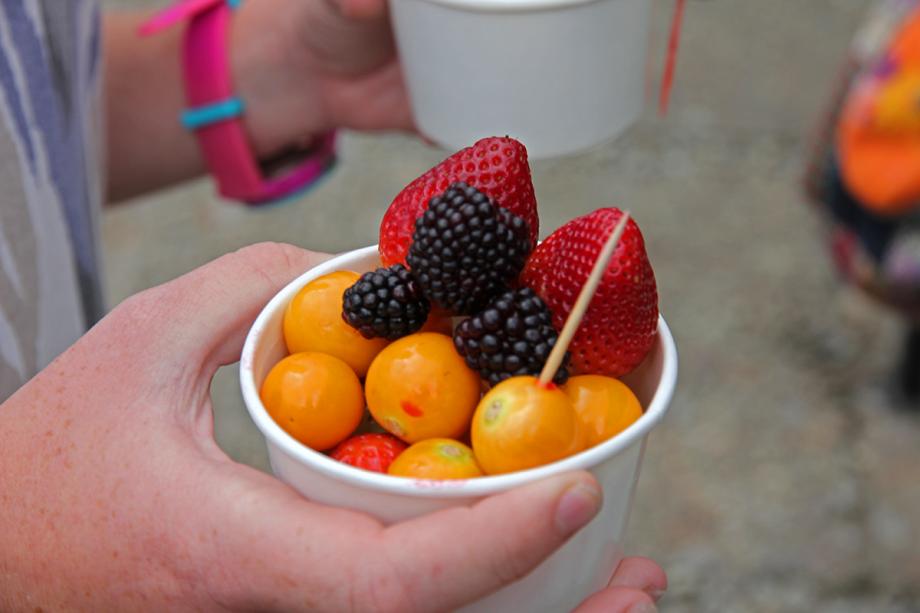
The orange ones are cape gooseberries…
These taste, not surprisingly, a lot like a gooseberry! They are especially common in countries like Colombia and Peru, where they are called uchuvas or aguaymantos. They’re a bit sour but fresh tasting and go well in combination with other fruits.
Tamarind
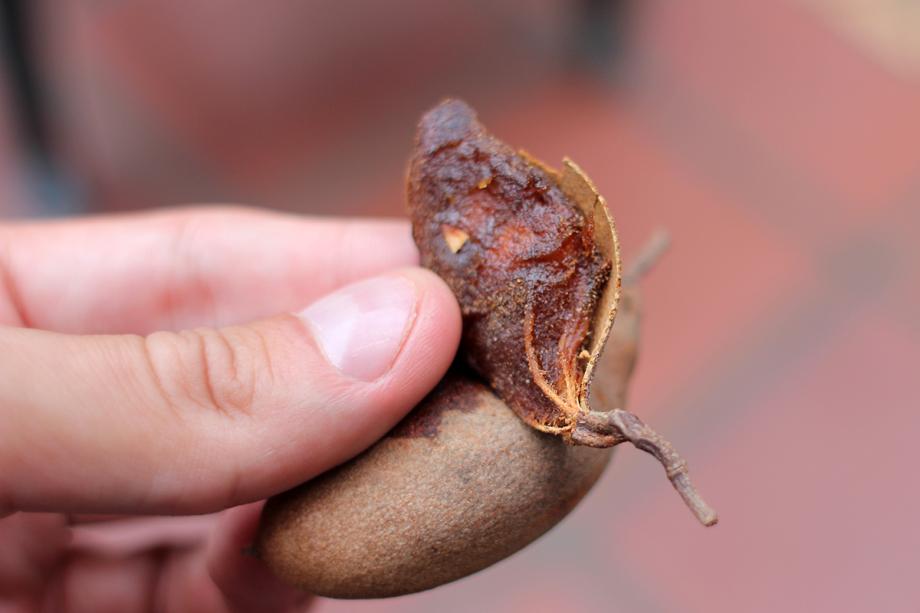
Not usually eaten on its own, but give it a try. (Nice with tea or coffee!)
Where: pretty much anywhere
The tamarind is not so much a fruit you eat on its own; it’s more often used as an ingredient in other things. But it’s fun to have a little taste of them. Inside their bean-like shells is a sticky paste that tastes a bit like raisins.
Fun facts: tamarind is used in Worcestershire sauce and HP sauce, as well as in Mexican mole negro.
West Indian Locust fruit (a.k.a. Stinky Feet)
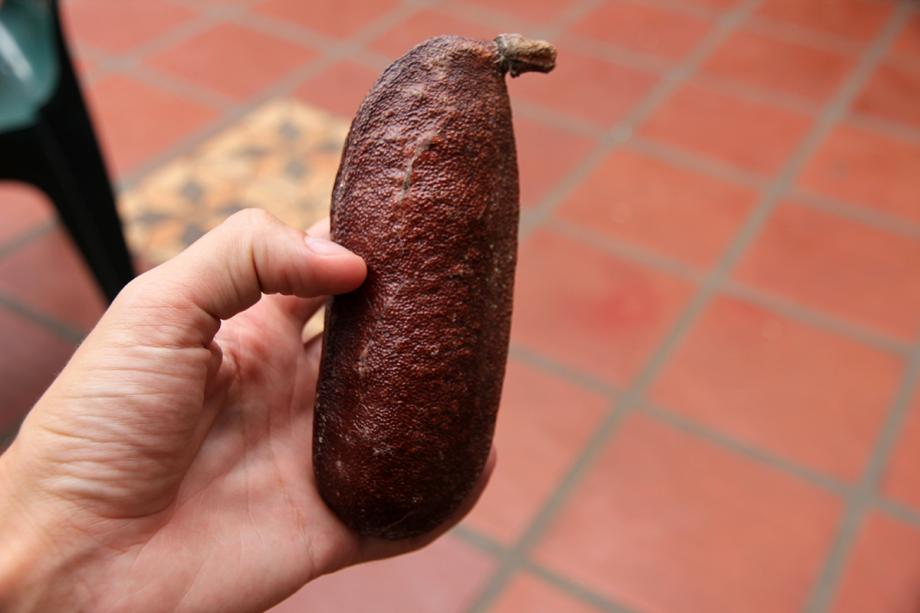
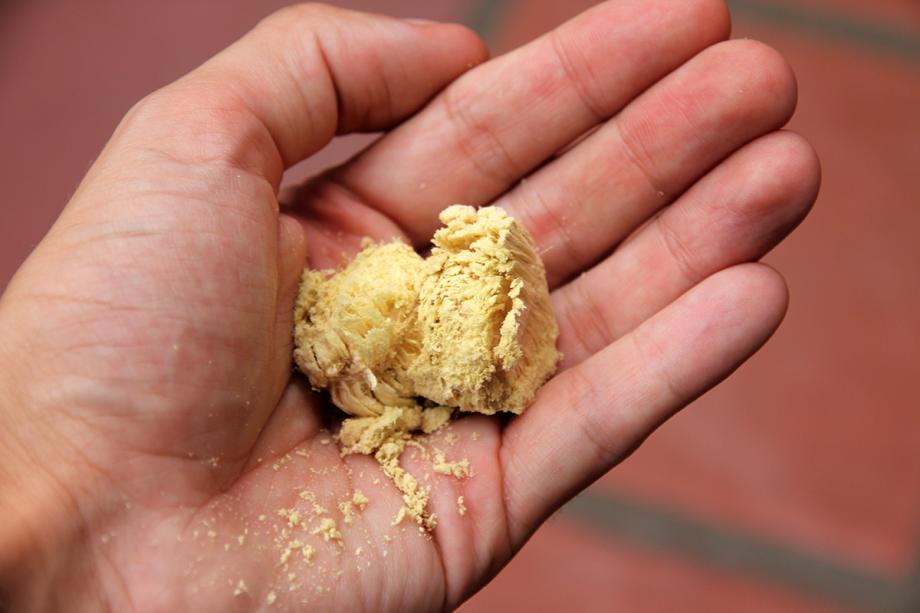
Where: Carribean, South America
Another weirdo fruit. Try this if you are a little adventurous. Southeast Asia may have the super stinky durian, but South America has the locust fruit… it smells a bit like bad cheese mixed with used socks. The flesh has a strange stringy texture, and when you eat it it sticks to your mouth kind of like cotton candy. Unlike the smell, the taste is not horrible however.
Carambola (Starfruit)

Where: mainly Southeast Asia and East Asia, can find it in Latin America as well
This fruit is a bit of a show-off. It looks fantastic, especially when you cut it as then the star shape is especially visible. These are nice to decorate a salad with, but personally I think the taste is a bit of a let-down. It sits sort of between a proper sweet fruit and a watery bell pepper. Good but not great.
Note: this fruit can be very harmful to anyone who has kidney stones, kidney failure, or other kidney issues.
Guavasteen
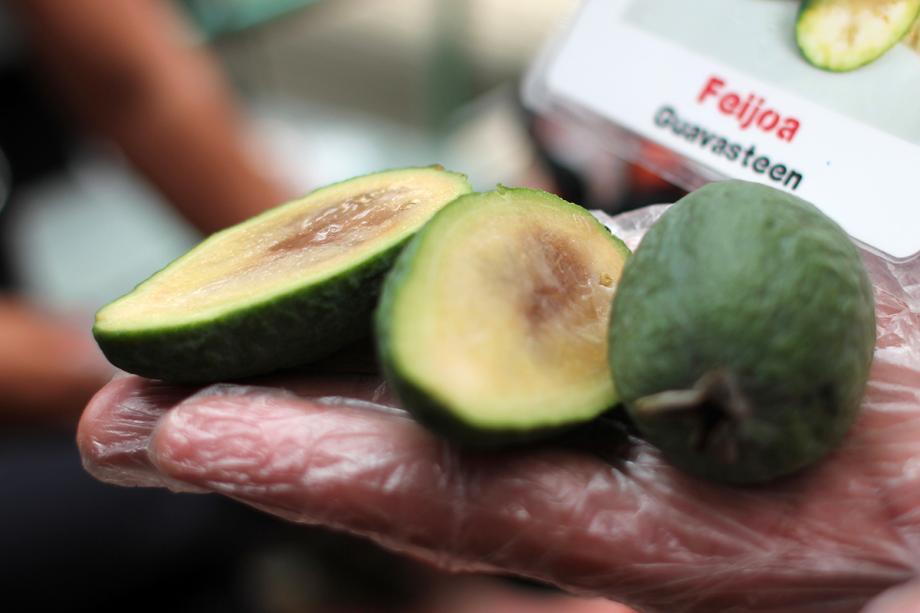
Where: South America
Aye caramba! The Guavasteen is a bit of a surprise. I still haven’t quite tasted any fruit like it. It’s very sweet and sort of rum-like… it reminds me a bit of desert wine or a liqueur. Another way to describe it is like apple pie, with a mint-y aftertaste. You have to try this!
The texture is a bit gritty like sand. In fact, the pulp is used in some natural cosmetic products as an exfoliant!
Papaya
Where: everywhere, sadly
Oh come on now, let’s not waste any time talking about the papaya. Does anyone else think these smell vaguely like vomit?
Eaten only begrudingly by hungry backpackers when it’s already part of a fruit salad anyway, papayas are surely the worst.
My personal Top 3
- Yellow Dragon Fruit – 5 out of 5 Om Nom’s (and Platinum Award)
- Mangosteen – 4.1 out of 5 Om Nom’s
- Guavasteen – 4 out of 5 Om Nom’s
What’s yours?
Lychee image credit: cc
Some links may be affiliate links, meaning I may earn commission from products or services I recommend. For more, see site policies.
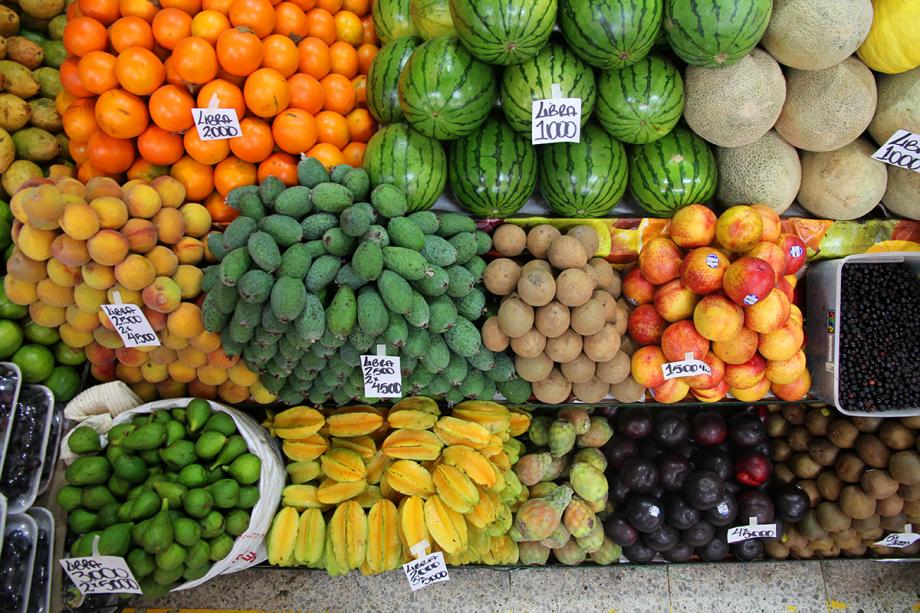






It is important to note that CARAMBOLA is contraindicated for people who have “kidney problems”. A lot of people don’t know that and eat the fruit. One carambola is enough to lead to death. “This is not a” fake new “.”
“É importante frisar que a CARAMBOLA é contra-indicada para pessoas que tem “problemas renais”. Muita gente não sabe disso e come a fruta. Uma carambola é suficiente para levar a óbito. “Esta não é uma ‘fake new”‘”
Thanks for this warning Isa. I see the following on Wikipedia: “Carambolas contain caramboxin[13] and oxalic acid.[1][14] Both substances are harmful to individuals suffering from kidney failure, kidney stones, or those under kidney dialysis treatment.” I’ll add a note to the article.
You forgot my favorite;
Guaba or Notably Inga edulis (Commonly Known as “ice-cream-bean” or, in Spanish, “Inga” or “guava” or “father”) Resembles edulis vanilla ice cream in flavor.
Also taxo and Zapote.
Enjoy!
Don’t think I’ve had it yet. Gonna try it! 🙂
LOL I agree with you about papaya. They’re disgusting.
Mangosteen is the best!
The dragon fruit is grown in Costa Rica and sold as Pithaya – pink and orange. There are 100’s of wild fruits that are not sold to the intl markets, they are awesome colors and sweet and tart flavors, best time to get them is April thru October
Guavasteen (Feijoa) are also found in New Zealand 🙂
Now I’m definitely envious of the kiwis! 🙂
I could not agree with you anymore about papaya!
i suppose durian should be in one of the list for tropical fruit as well
I could kill for some papaya right now. Nicaragua has some of the best papaya I have ever had. Then again, all fruit is so tasty and fresh there!
Papaya is AMAZING! WHAT are you even talking about? It does smell off but pair it with queso blanco and bread and you have a full breakfast right there. As for Tamarind- did you try both flavors? In Central and South America you get the sweet kind which is ok. In the Caribbean you get the sour kind- once you beat the Tamarind beetles to the fruit inside you will be in lemon face heaven. Try not to eat too many or your tongue will crack and the roof of your mouth with peel. I would add “Corazon” to this list I think the English term is “Custard Apple”. It’s really soft and sugary- my favorite. Oh and Quenepas- Spanish Lime- I guess these are mostly from the Caribbean as well but Spanish lime is fantastic- very pulpy with a huge pit in the middle- you can totally eat pounds of it. Also any of the fruits in your list made into ice cream are great.
I’d love to find the tropical fruit I miss the most in the world, we used to find it everywhere in Venezuela. They went by the street-name ‘mormon’ (it has nothing to do with the religious organization ) and it was delicious. It’s has a green leathery skin covering a pink salmon colored fleshy or semi-gelatinous sweet & tart fruit covering a large round seed. It grows in clusters like grapes from a palm tree I believe. It’s one of the best fruits around for flavor and nutrients. Some people may have nicknamed it one of ‘God’s’ fruits, it’s so nutritious.
I can handle the smell of the papaya, en when fresh I honestly think it is quite a tasty fruit! Anytime we meet again, you can give all of yours to me! 😉 Nice post!
I suppose it’s not the most terrible fruit as long as you pinch your nose! But happy to off-load them to you next time 😉
Really enjoyed this post! I love dragon fruits, they are so incredible, especially in Vietnam. Though the purple ones in Taiwan are kind of watery. I really want to try the yellow one! Can you get it in Costa Rica?
I’ve been told they are grown mainly from Venezuela/Colombia down south along the Andes. Apparently they’re not grown so much in Central America but perhaps can be found imported there.
Anyone who mentions mangosteen in lists like this, I instantly feel like I can be friends with… I had a serious obsession with them while living in Southeast Asia! haha
Haha they are truly amazing. I remember being weirded out a bit by them the first time, but once I had a taste I couldn’t stop eating them!